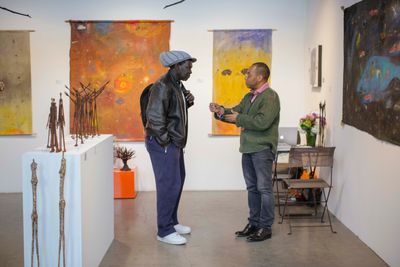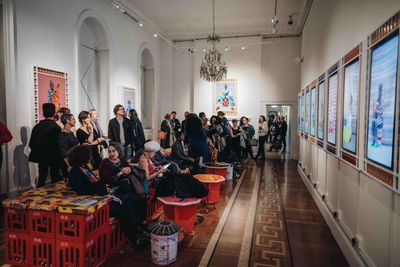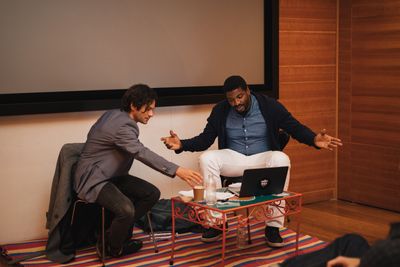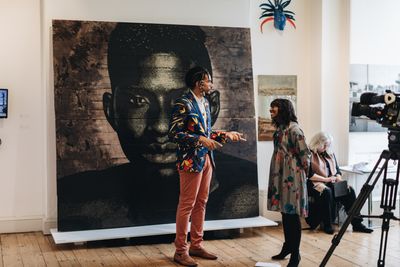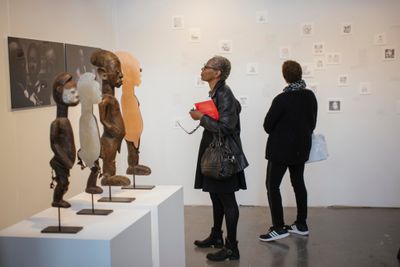Touria El Glaoui
Touria El Glaoui. Photo: © Victor Raison.
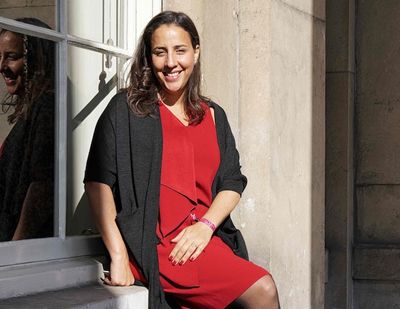
Touria El Glaoui. Photo: © Victor Raison.
Between 24 and 25 February 2018, the 1-54 Contemporary African Art Fair will take place at La Mamounia, a historical hotel in the centre of Marrakech. This will be the fair's first edition on the African continent, and will feature 17 galleries from Denmark, France, Italy, the UK, the US, Morocco, Côte d'Ivoire and Nigeria, representing more than 50 international artists, including Ibrahim El-Salahi, François-Xavier Gbré and Dawit L. Petros. Five new galleries will participate in the fair for the first time, including the London-and-Berlin-based gallery Blain | Southern, which will show works by Aboulaye Konaté and Moshekwa Langa. The fair's discursive FORUM programme, titled 'Always Decolonise!', is curated by Dar al-Ma'mûn Director Omar Berrada, and will address the persistent need to decolonise knowledge production.
The return to the African continent has been anticipated since the launch of the first 1-54 in London in 2013, and later in New York in 2015. But the need to push contemporary African art on the international scene first, coupled with scarce state funding for the arts in Morocco, had hitherto hindered this move. Today, the choice of Marrakech seems to be a timely one, given the city's burgeoning art scene; the recently opened Musée Yves Saint Lauren, the Montresso Art Foundation, Voice Gallery and the privately run Museum of Contemporary African Art Al Maaden (MACAAL) are sustaining this artistic wave and establishing the city as a new hub. 1-54 is partnering with these institutions and others, such as Le 18 and the Ecole Superieur des Arts Visuels de Marrakech, to offer a strong auxiliary programme of events; for example, MACAAL, which houses the modern and contemporary art collection of the Lazraq family, is relaunching its permanent collection while hosting a photography exhibition curated by Afrique in visu featuring some 40 artists from Africa and the diaspora, Africa is No Island (24 February–24 August 2018).
Touria El Glaoui, daughter of famed Moroccan artist Hassan El Glaoui (who was famously encouraged by Winston Churchill), is the founder of 1-54. In a short period of time, El Glaoui has steered the fair to become a leading platform for art from Africa and its diaspora, and a catalyst in the growing interest in contemporary African art worldwide. The last edition took place in London in October 2017, during the busy week of Frieze art fair; it took over the wings of Somerset House, which has hosted the fair in the city since its inception, and featured 42 galleriesfrom Tunis, Nairobi, Maputo, London, Paris and Milan, representing more than 130 artists. The wide-ranging body of works explored quotidian life in Africa and personal experiences of artists and highlighted the fluidity and diversity of identities in post-colonial contexts.
In this conversation, El Glaoui—listed as one of the 100 most powerful women in Africa by Forbes—talks about the mission of 1-54 in light of its upcoming iteration in Marrakech, and notes the challenges the fair faces when it comes to representing such a large and diverse continent. The discussion opens up on the state of contemporary art from Africa and its diaspora, the need for the structural development of art sectors in Africa and the continuance of the art fair model today.
ADYou were recently named one of Apollo's 'Global 40 under 40', and have been listed among the 100 most powerful women in the Middle East by Forbes. This is an amazing achievement given your transition from the telecom industry to the arts in 2013.
What compelled you to take the leap into the arts with 1-54, and why did it seem like the right time back in 2013?
TEGArt has never been too far away. My father is an artist, so I grew up immersed in that environment. I have always been inspired by the potential of art to empower on many levels. However, making the transition from one industry to another was certainly not an easy decision; it took some courage and considerable planning.
Before 1-54, I was fortunate enough to travel around Africa and the Middle East for work, and at the same time I began to actively engage with the local art scenes. What I experienced was exceedingly eye opening. So, when the idea to start an art fair of this nature was sparked, I saw it as an opportunity to merge my business background with my passion. I recognised, as did many others at the time, that the representation of artists from Africa and its diaspora, particularly in the European and US art markets was limited. I wanted to create a platform that could address the disparities within recognised art markets and form a network of artists and cultural practitioners committed to developing this sector globally.
By 2011, there was significant evidence of a growing interest in contemporary art practices of Africa and its diaspora. The inaugural edition in London 2013 was the result of a vision that was many years in the making.
ADCould you reflect on the early beginnings of 1-54 and the overarching aim of the fair? How do you maintain 1-54 as a platform that is free from categorisation and pigeonholing?
TEGIt has been quite the journey. When 1-54 was established in 2013, it was an intimate fair that only took up one wing of Somerset House. At the time, the biggest challenge was building a support system for an under-recognised art sector. Every year poses its challenges, but we are proud of how far we have come and grateful that we can continue, through a collective effort, to contribute to the growth of contemporary art of Africa and its diaspora. The upcoming Marrakech edition is truly a marker of growth for us.
Categorisation is something that cannot be entirely avoided. The way I see it is that we can either allow these umbrella terms to limit us, or we can move beyond preconceived limitations. 1-54 invites multifarious readings of notions of 'Africa' by working with autonomous, self-defining practitioners who have chosen to unite under words such as 'contemporary', 'Africa', 'diaspora', 'artist', et cetera. The name of the fair also reminds us that Africa is 1 continent with 54 countries. By no means can we represent all 54 countries at every edition; however, we aim to promote the wealth of diversity and encourage openness in thought and practice.
ADCould you talk more about the decision to stage an edition of the fair in Marrakech, beyond your personal connections to Morocco? Why Marrakech, and why now? What challenges have you faced when organising 1-54 there?
TEGThe dream has always been to have a well-founded presence on the African continent and continue expanding our reach ever since 1-54 came to fruition. To have a fair in Europe and North America was a necessary move to fulfil our core objectives. That being said, we cannot claim to be invested in contemporary art of Africa and its diaspora if we do not cultivate infrastructure on the continent. Our intention is to strengthen our network by physically connecting with the continent and its diaspora. We are building a direct link to facilitate exchange and collaboration between New York (North America), London (Europe), Marrakech (Africa) and beyond.
Every site poses challenges, particularly from a logistics point of view, but having to think around those hurdles is what makes each edition a unique experience. FORUM and our Special Projects are not commercial endeavours but are essential elements of the fair. We have to work to secure funds and non-monetary contributions to ensure their success. So, we are constantly working at strengthening our partnerships.
ADWhat about the so-called divide between North Africa and the rest of the continent. How will you tackle this theme of geography in Marrakech?
TEGIt is quite significant that we have decided to establish our first fair on the African continent in North Africa. This in itself makes a statement. It is a call to invite new ideas to the table and evolve divisive preconceptions. We have endeavoured to facilitate a programme that is diverse yet intentional, one that nurtures cross-cultural exchange, collaboration and dialogue. It is very important for the fair to respond to its location. Therefore, concepts around shared narratives and current conditions, mobility and territories will be explored in the FORUM programme and the satellite events.
ADSince 2013, founder and artistic director of Dakar's RAW Material Company, Koyo Kouoh, has curated the FORUM programme. This year, Omar Berrada is coming on board as curator of the FORUM programme in Marrkech and New York. How has FORUM evolved? Could you talk about the evolution of FORUM since its inception and tell us a bit about this year's programme?
TEGFORUM has always been a crucial element of the fair. As an art fair dedicated to promoting artists from historically marginalised regions, we have to actively address tired and reductive notions. We have found FORUM to be such a powerful vehicle to stimulate critical enquiry. Past programmes have explored notions of futurity, borders, community and activism, as well as the role of education in the production and sustainability of an economy of knowledge.
This year, under the title 'Always Decolonise!', FORUM will engage with the idea that 'decolonisation is not a historical event that belongs to the past but rather an everyday task, in constant need of re-actualisation', as Omar puts it. This will be a very exciting programme of talks, performances and screenings that will take place at La Mamounia, Le 18 and ESAV. Omar has contributed to previous FORUM editions, so it is wonderful to be working with someone who has an intimate knowledge of the fair. He also has an established curatorial practice in Marrakech and New York, which is why he will be curating 1-54's FORUM programme in New York this coming May.
ADWhat audience are you expecting in Marrakech?
TEGOver the years we have steadily strengthened our international network, which is why we are pleased to be welcoming collectors, contributors and visitors from all over the world. Collectively, through the exhibitors and partnerships, we will be able to draw in a diverse and broader public too. I am looking forward to seeing a diverse audience at La Mamounia and at the satellite events around the city.
ADThere is a strong need for structural development on the continent in terms of infrastructure as well as resources for artists. Does 1-54 operate within local art scenes and in what way do you see the mission of 1-54 as being complementary to their development?
TEGWe have partnered with many local institutions and organisations this year. We wanted a programme that extended beyond the walls of La Mamounia and connected with the people and places of Marrakech. We are excited to present five Special Projects for this edition. These include Elizabeth Efua Sutherland's performance, Black Noise, which is co-presented by The Museum of African Contemporary Art Al Maaden (MACAAL), Gallery 1957 and 1-54; Eric van Hove's artistic engineering project, The Mahjouba Initiative; and a long-term photographic project by Yoriyas, Casablanca Not the Movie, which will be exhibited at Riad Yima, artist Hassan Hajjaj's boutique gallery. Fondation Montresso* will present IN-DISCIPLINE# 1 an exhibition curated by Dominique Zinkpè, and the Museum of African Contemporary Art Al Maaden (MACAAL) will open two exhibitions: Africa Is No Island, a group photography show, and a semi-permanent showcase of the museum's collection. We have also partnered with local institutions such Musée Yves Saint Laurent Marrakech, ESAV (L'École Supérieure des Arts Visuels de Marrakech), Le Comptoir des Mines Galerie, and LE 18.
ADAre there any special commissions that were produced for the upcoming fair?
TEGElisabeth Efua Sutherland's performance, Black Noise, explores black as a lament, colour and meditation through sound and movement. Sutherland, together with eight fellow performers, incorporates components of contemporary, modern, and traditional Ghanaian dance, with song and spoken word. Although this is not a new work, it will take on a different energy within the context of Marrakech.
ADIn the context of a regional fair, there is a danger of encouraging artists to respond to a certain demand or aesthetic to appeal to collectors. How do you maintain quality and continuity when working with emergent talents and young galleries?
TEGWe have a dedicated committee that carefully reviews all applications. It is a rigorous selection process that reviews the artists, the curatorial underpinnings, exhibition design and the galleries' overall mission and point of view. The committee helps exhibitors succeed both from a commercial and curatorial perspective.
We really need to move away from prescriptive aesthetics—it restricts the artists' voice and can affect audience's willingness to receive challenging work. It does not nurture sustainable development practices and can be detrimental to the market in the long run. This goes back to pigeonholing, and also brings up difficult conversations around 'authenticity'. Are we willing to embrace the multiplicity of voices that make up the contemporary art world, both known and unknown? How do we effectively practice ideas of transformation? These are some of the questions we have to ask ourselves.
ADOn the flipside, young galleries might not have the means to participate in fairs abroad because of the high costs involved. How can 1-54 work to remedy this situation? Do you have a strategy in place to ensure not only the participation of young galleries but also their return in subsequent years?
TEGTo participate in an art fair is an investment. It is an opportunity to join an international network of art industry professionals. It is not always easy for young galleries but in the past we have had a combination of young and established galleries participate, many of which have grown with us over the years.
Our Special Projects and events programme champions the work of non-profit cultural organisations, institutions, art centres and emerging galleries with the aim of providing them with the opportunity to realise a unique project in collaboration with 1-54. We also have various booth options, which offer flexibility for exhibitors. We are always looking for new ways of improving the model and ensuring that we provide exhibitors with all the tools required to succeed.
ADThere appears to be a growing rapprochement between the models of the fair and the biennale. What do you think about the art fair model in relation to the large-scale exhibition format, and how do you see it evolving with the times?
TEGThe fair model and the perception of the role it plays within the art market has transformed considerably. We are now in a position where the model is fluid and multidimensional and I believe this is one of the reasons why it is more valued within the art world. I still think that the fair and biennale have varying core aims and modes of practice, however, there are some convergences. These crossovers allow for different platforms to collaborate. Both parties employ similar approaches; from commissioning and public programming to incorporating book stores, cafes or meeting spaces as part of the design. There is also a greater openness to mutual exchange between established institutions, projects and art fairs.
ADThe market for contemporary African art has seen a global upsurge in the last few years and 1-54 has been at the forefront of it. How do you evaluate the recent interest in art from the region?
TEGEach market is unique, and no market is ever foolproof; we can only draw insight from the successes or struggles we observe. The art market will always be in search of the 'new'. The future of art is constantly being explored and redefined. We have also moved into an age of increased global connectivity and, as such, the world feels smaller and somewhat more accessible. The surge in interest in the art of Africa and its diaspora is an indicator of these shifts, not to mention a multitude of other socio-economic and political changes particularly on the African continent. We are seeing more collectors from the continent and domestic markets are growing considerably, too.
Sustainability is reliant on 'moving with the times'. To sustain the market, we have to take on a holistic approach. Resources need to be channelled into artist career development and education programmes. There needs to be funding and public support for institutions, projects and smaller non-profit organisations from the periphery. We also need to keep pushing the boundaries of the discourse surrounding the art of Africa and its diaspora; to question, research, document, conserve and reimagine. If we continue to value the market and nurture all the tributaries that contribute to its success, then we will steadily build a socially transformative and economically sustainable sector. —[O]



